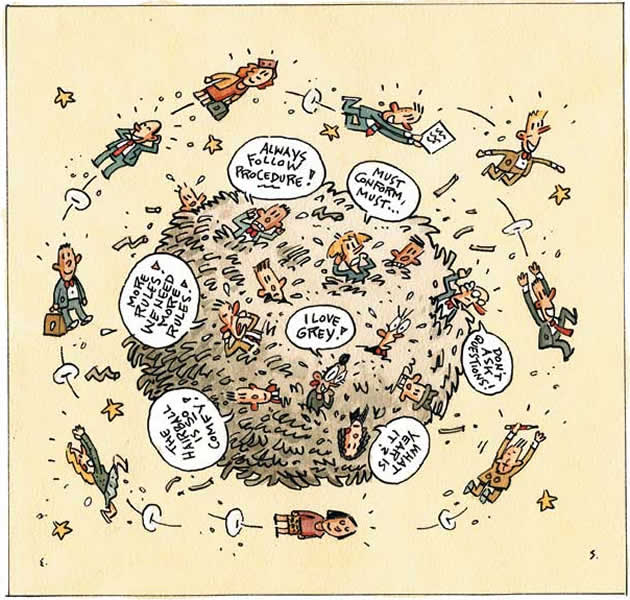Better writing by applying simple rules (DSRP)
 Erin Powers
·
2 minute read
Erin Powers
·
2 minute read
image credit[1]
This blog considers ways in which DSRP can improve our writing. DSRP is an acronym representing four simple rules the Cabreras posit as underlying the diversity of systems thinking methods and approaches.[1:1] These rules are making Distinctions and recognizing Systems, Relationships, and Perspectives, and they are basic to all cognition, as well. Since writing is generally a vehicle for communicating thought, it should be no surprise that DSRP is relevant to the whole enterprise of writing as a form of communication. (Even when communicating feelings, we typically wish to do so with some degree of coherence in order to be understood; DSRP also helps us distinguish and communicate our feelings.)
As we did in school, let's begin with the outline! Students are typically taught to outline their work before writing, particularly if the writing assignment is of greater volume and complexity. An outline already incorporates the systems rule (the hierarchical organization of an outline represents part-whole structure) and the distinctions rule (parts of each section are identified).
Rigorously applying the other simple rules--particularly the relationships rule--can go far towards improving our writing. A frequent complaint about (not only student) writing is the lack of transitions between sections, frequent nonsequitors, and the raising of points that are then insufficiently addressed (or completely forgotten).
DSRP is fractal in its application. This means that D,S,R, and P occur at multiple levels of scale. Relatedly, when writing an outline, it is incumbent upon the writer to make an explicit relationship between sections of the paper. This is of course equally as important in the paper itself, at different levels of scale. In other words, a good writer uses transitions to connect one section of the paper to another, one paragraph to another, and even one sentence to another. Sometimes writers speak of "threading" an argument throughout a paper. The main argument can be seen as the relationship tying together different sections. In this way, conscious application of the relationships rule can make us better and more persuasive writers, less given to tangents and extraneous information.
Applying the distinctions rule can be helpful as well. Sometimes writers say the same thing multiple times, each time using different words. We can apply the distinction rule and consider whether we are in fact making a distinction (and ask ourselves whether we want to do that). Subtle differences in words can sometimes impart substantially different meanings. If we are not purposefully making a distinction, we can think about eliminating redundancy.
Applying the perspectives rule can also improve our writing. As detailed in Systems Thinking Made Simple, "Perspectives can be thought of as parts or sections of the document that provide 'framing' for other parts--a lens through which the author is approaching other ideas" (2015, pg. 147).
Perspectives consist of a point (the "seer") and a view (that which is seen). It is helpful in all writing to consider the point (the seer) of a perspective. Another way to say this is "consider your audience." Whom are you writing for? How much information do they need? What knowledge can you assume? What will be interesting to your reader? How formal or informal should you be?
These are a few ways in which DSRP can help us be better writers (and make better arguments).
-
Cabrera, D. Cabrera, L. 2015. Systems Thinking Made Simple: New Hope for Solving Wicked Problems. Odyssean. For more information on each rule, read the DSRP primer. ↩︎ ↩︎
.png?width=150&height=150&name=CRL%20GOAT%20Logo%20(4).png)


